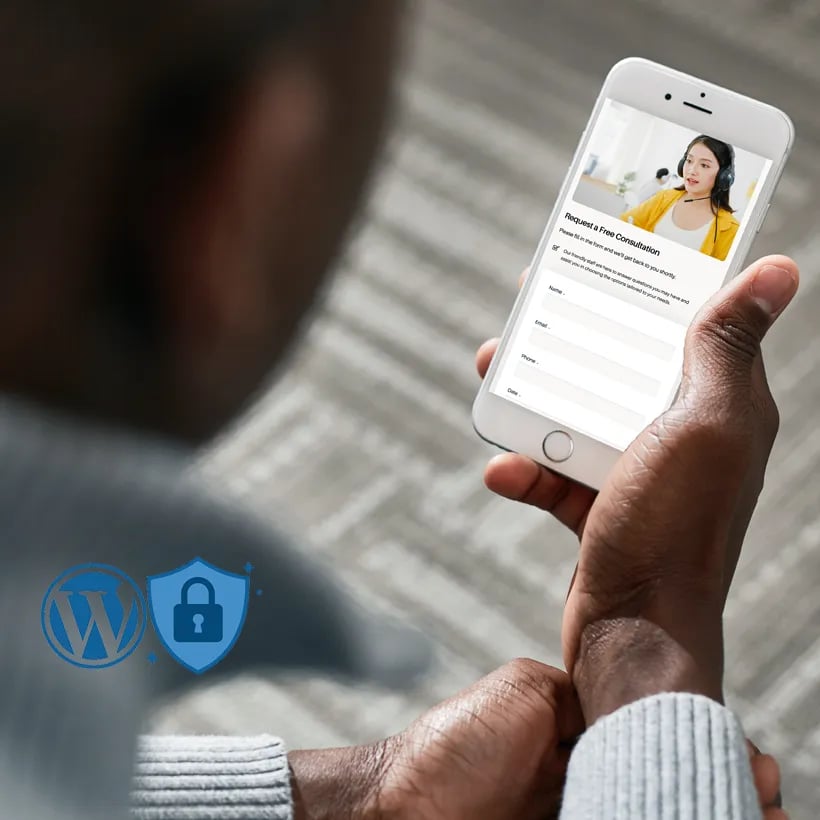When someone breaks into a WordPress site, the blame tends to land on WordPress CMS itself. The truth is a little messier.
With WordPress powering more than 43% of the web, it’s easy to see why it’s a popular target. The same flexibility that allows you to spin up everything from a food blog to the Sony Music website also opens the door to mistakes, some small, some catastrophic.
Security firm Sucuri reported that in 2023, over 95% of the CMS-based websites they cleaned after a hack were running on WordPress. That number sounds damning, but it ignores one critical fact: WordPress dominates the CMS space. Of course, it shows up most in breach reports because it’s everywhere.
So, is the software actually secure, or is the internet being held together by duct tape and denial?
The WordPress Core: A Fortified Base
The WordPress core — the part that powers your site before any themes or plugins are added is very secure. It’s maintained by a dedicated security team and reviewed by thousands of developers worldwide. Vulnerabilities do happen, but they’re usually patched fast.
That said, when you start layering on plugins and themes from third parties, your website security posture starts to depend on your choices, not just the WordPress foundation.
Where Things Start to Crack: Plugins, Themes, and Poor Practices
Most WordPress hacks don’t come from the core software. They come from:
- Outdated software (themes, plugins, or even WordPress itself)
- Weak login credentials
- Poorly coded or abandoned plugins
- Lack of a secure connection
- Sites that never bothered to install an SSL certificate
According to WPScan, as of early 2024, over half of known vulnerabilities in WordPress sites came from plugins. Another 37% were traced back to themes. Only 11% had anything to do with core WordPress files.
So, What Makes a WordPress Website Secure?
Let’s talk about what you, the website owner, can control. Because honestly, that’s where the power is.
1. Choose Plugins Wisely
Select plugins that are:
- Frequently updated time to time
- Well-reviewed from the users
- From the official WordPress plugin directory or reputable developers
2. Keep Everything Up to Date
Enable automatic updates for your WordPress core, plugins and themes. Using outdated software can make your site vulnerable to automated attacks and cross-site scripting (XSS) vulnerabilities.
3. Install an SSL and force HTTPS.
This is non-negotiable. HTTPS encrypts the data between your users and your web server, protecting things like passwords and personal information.
You can:
- Get a free SSL certificate via your hosting provider or Let’s Encrypt
- Use tools like SSL Insecure Content Fixer
- Edit your .htaccess file or use a plugin like Really Simple SSL
- Scan for hardcoded HTTP links using a tool like Better Search Replace
4. Secure your login
- Use two-factor authentication
- Change your login URL using a plugin like WPS Hide Login
- Limit login attempts with Limit Login Attempts Reloaded
- Use a Web Application Firewall (WAF) to prevent brute-force attacks
Don’t Forget These Extra Security Measures
If you’re serious about securing your WordPress site, here’s a quick checklist:
- Enable automatic updates
- Backup your site regularly
- Conduct weekly malware scans with Wordfence or Sucuri Security.
- Remove any unused plugins and themes.
- Monitor your WordPress dashboard for suspicious activity.
- Use a reputable SSL provider like Let’s Encrypt or Cloudflare.
- Lock down file permissions.
- Limit the number of admin-level user accounts.
WordPress Powers the Big Guns, But They Know What They’re Doing
Yes, WordPress websites power major brands like Time Magazine, TechCrunch, and even parts of NASA. However, these organisations take web security seriously. They run professional-grade setups, not random plugins with default settings.
The same goes for ecommerce sites. They need secure payments, valid SSLs, fast servers, and clean code. If you want to play at that level, don’t cut corners.
Want to Fix a WordPress Site That’s Already Broken?
If you’re trying to fix a WordPress site that’s been compromised, here’s a step-by-step guide to start:
- Take the site offline (or put it into maintenance mode)
- Backup everything, even if it’s infected
- Scan for malware using Wordfence or Sucuri
- Check the .htaccess file for suspicious redirects
- Replace core files with fresh ones from WordPress.org
- Audit all plugins and themes — remove anything you don’t trust
- Reinstall your SSL certificate
- Submit a clean version to Google Search Console if you were flagged
Final Word: Security Isn’t a Feature. It’s a Habit.
Treating your WordPress site like a living thing — constantly updating, cleaning, and protecting it — ‘ll serve you well. But if you ignore updates, install shady plugins, and skip SSL, you’re leaving your front door open with a sign that says, “Take what you want.”
A secure website doesn’t happen by accident. But with the right tools and a little attention, WordPress can be every bit as safe as any custom-built platform.
And if NASA thinks it’s good enough, maybe it’s not such a bad idea for you, too.
